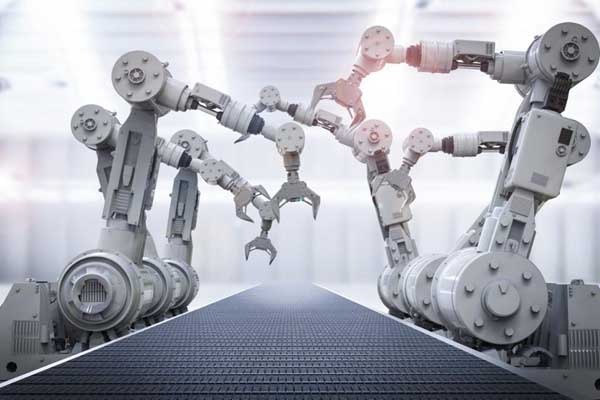By – Niloy Banerjee
Industrial robots and robotics engineering are optimizing industrial processes. Various key industrial automation companies are continuously innovating Robotics in their product offerings to meet the evolving customer requirements. We below draw a few undeniable trends which are set to hit the global technology space making ‘Robotics’ a reality for the mainstream.
Robots-As-A-Service
With the rising digital innovation and increasing digital literacy of the consumers across the globe, there has been a significant emergence of efficient business models such as Robots-As-A-Service (RAAS) enabling companies operating in industries ranging from manufacturing to healthcare to complete larger tasks done in a shorter time through virtual agents. RAAS allows the customers in saving upfront investments and operating expenses even before venturing into highly operational businesses. This business model can be used as rental or on lease, further augmenting the global industrial robotics rental market. Consequently, over 30% of the commercial robotic applications will follow the “Robot-as-a-Service” business model to reduce the costs incurred in the deployment of robots significantly.
Automation of Robots
Owing to the increasing demand for optimized processes and surging need for reducing the errors due to labor forces, industries predominantly the manufacturing sector has been emphasizing on the usage of automated process, resulting in the increasing robotic automation. Not only the manufacturing sector, automated robots are the considered the most viable choice for improving efficiency in the current supply chain, warehousing operations, and other logistic processes. Additionally, the applications of robotic engineering are likely to advance considerably for the global automation and robotics market in the automotive industry.
Cobots Gaining Traction
End-user industries, particularly, in the emerging economies across the globe are still highly dependable on the staff and labor forces, which, eventually, encourage them to opt for Cobots or Collaborative Robots. These robotic machines work along with their human counterparts for increasing efficiency and enhancing the overall productivity. Various SMEs in the automotive sector, rubber and plastic industry, food and beverage sector are leveraging the benefits such as lower costs, and convenience in programming and integration, offered by collaborative robots. Technavio’s global collaborative robots market research report predicts the rising adoption of cobots by these industries as one of the key factors leading the market to register a CAGR over 60% by 2021.
3D Technology and AI Robots
3D technology and Artificial Intelligence has been becoming mainstream in the robotics industry in recent years and the trend is likely to continue even during the forthcoming years. 3D machine vision will help the robots to feed data into AI technology. For instance, AI has been translating the visual information obtained from the 3D vision, eventually boosting the growth of the 3D robotics market. Furthermore, the emerging DIY and the Maker Movement across the advanced economies of the globe have fostered the growth of 3D technology-enabled robotics, further fuelling the robotics engineering systems.
Robots on the Edge
Robots made ideal platforms for edge computing – building sensors into the extremities of automated systems, where machines meet the real-world environments they are built to influence. During 2019 we can expect to see advances in smart sensors – sensors with inbuilt artificial intelligence – reducing the need for information to be sent to the cloud or centralized servers for processing, before it can be acted on. New companies will enter the robotics market resulting in more robots, cheaper machines and larger variety. The number of companies developing and marketing robots will increase significantly in 2019, especially in Germany, China and the U.S. In 2019 industrial manufacturers will have a wide choice of machines — some will be task-specific and others will be generalist robots. Key factors will continue to be reliability, safety, speed, precision and ease of use. As with the early personal computer market, robots will be used for applications the manufacturers did not imagine.
The article is an original piece of Niloy Banerjee. He is a renowned B2B Tech Writer and has been keeping a hawk-eye across the Indian ESDM and IT industry for around a decade now.















